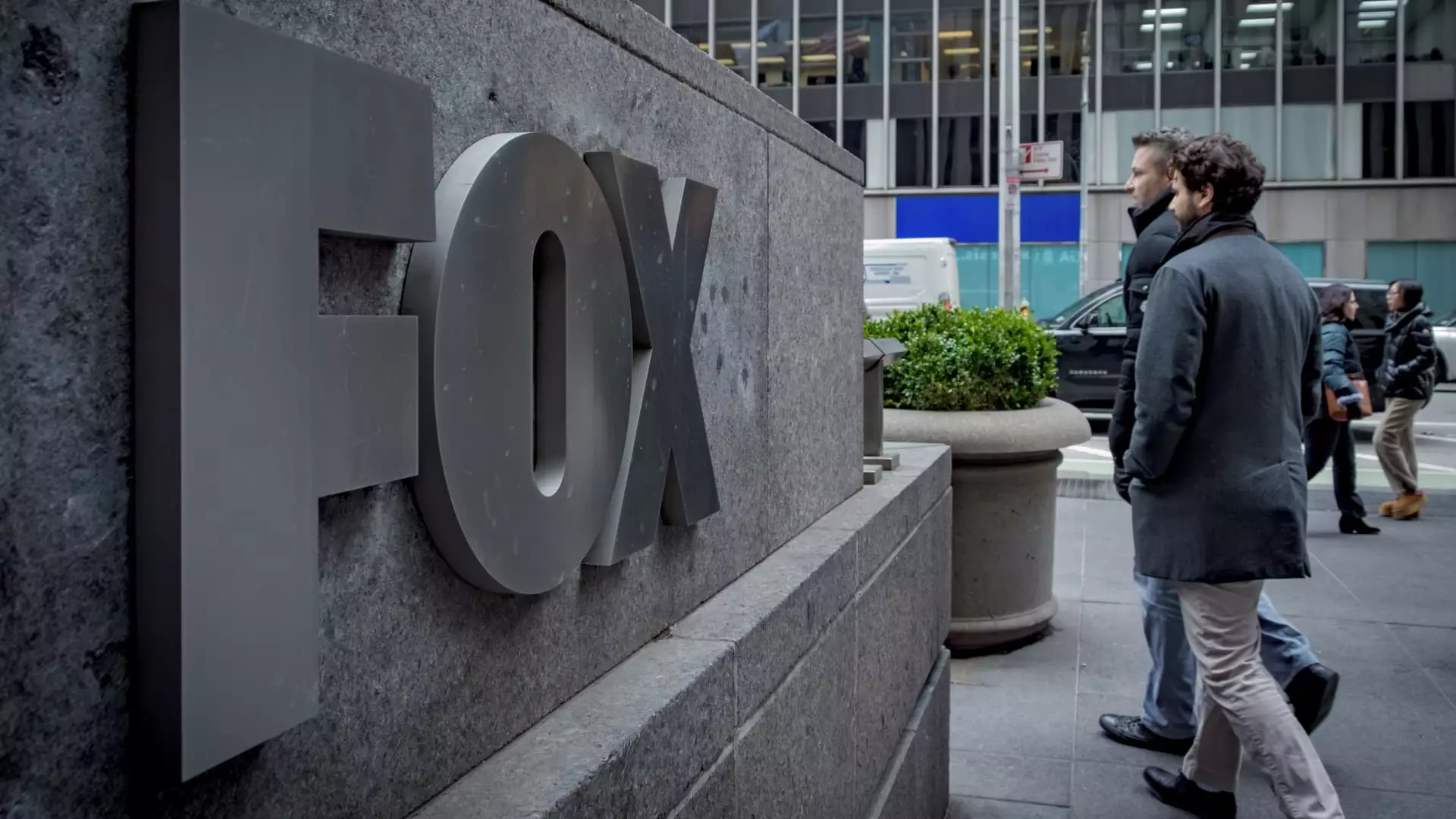Fox Corporation’s announcement of the launch of its streaming service, Fox One, feels more like a reluctant concession than a bold stride into the digital age. While the company’s decision to roll out a new platform ahead of the NFL season seems strategic at first glance, beneath the surface lies a cautious and somewhat half-hearted move that reflects both hesitation and misjudgment. With a price point of nearly twenty dollars a month and no exclusive or original content to fuel its appeal, Fox One risks becoming yet another underwhelming player in an overcrowded streaming landscape.
What is most troubling about Fox’s approach is its apparent belief that simply repackaging existing content — sports, news, and cable programming — will suffice to capture consumer attention. The absence of original programming or exclusive rights demonstrates a fundamental misunderstanding of what audiences are demanding in today’s streaming era. Consumers no longer settle for rehashed networks; they crave innovation, unique access, and a sense of belonging to a curated digital community. Fox’s insistence on maintaining a traditional, less ambitious model signals an unwillingness to invest in the content that could truly differentiate it.
Missteps and Missed Opportunities: A Strategic Blind Spot
Compared to competitors like Disney and its ESPN+ or Netflix’s diverse library, Fox seems to be sleepwalking rather than sprinting toward the future. The decision to keep costs lean and avoid the costly chase for exclusive content overlooks an essential truth: today’s streaming wars are driven by differentiation and consumer loyalty. By not offering original programming or exclusive rights, Fox One falls into the trap of being a me-too service, likely to be overshadowed by more innovative or flexible competitors.
Furthermore, the company’s strategy of bundling with other services appears more like an afterthought than a carefully crafted plan. Murdoch’s comments about “targeted audiences” and “keeping it simple” suggest a recognition that their current content portfolio is insufficient to stand alone against giants in the streaming game. Yet, instead of embracing this challenge with boldness and creativity, Fox seems content to hedge its bets and avoid alienating its traditional pay TV customer base — a gamble that may forward their short-term revenue but jeopardizes long-term relevance.
Why Backing Off Could Be a Critical Mistake
From a broader perspective, Fox’s cautious stance raises questions about the company’s understanding of the digital media ecosystem. In a time where cutting the cord is becoming the norm rather than the exception, maintaining a reliance on traditional broadcast and cable models seems increasingly misguided. While Fox has temporarily shielded itself from some cord-cutting issues by selling off entertainment assets to Disney and focusing on news and sports, this strategy may be short-lived if they fail to adapt more aggressively.
The decision not to invest heavily in exclusive content or innovative streaming features makes it clear that Fox is still hesitant to fully embrace the digital future. Instead, it appears to be trying to preserve its legacy revenue streams while dabbling in streaming as a secondary priority. This approach risks rendering Fox One irrelevant in an industry that rewards disruption and fresh ideas. Consumers are no longer willing to pay premium prices for a “safe” lineup of standard sports and news programming—they want curated experiences tailored to their specific interests.
Center-Left Perspectives on Fox’s Strategic Flaws
From a centrist liberal perspective, Fox’s approach underscores a broader issue of corporations clinging to traditional models amid a rapidly changing environment. The reluctance to innovate and put forward compelling, exclusive content reflects a fear of risking existing revenue streams, yet it also signifies a failure to recognize the importance of cultural relevance and social responsibility in today’s media landscape. In a world increasingly driven by diversity, authenticity, and engagement, Fox’s strategy seems outdated and underwhelming.
This hesitancy to take bold steps may also reflect a broader ideological caution — a desire to maintain the status quo rather than embracing digital transformation that could, ironically, democratize access to information and foster a more inclusive media environment. By sticking to familiar content and minimal investment in original programming, Fox risks alienating younger, more progressive audiences who demand fresh perspectives and innovative storytelling.
Ultimately, Fox’s trajectory into streaming reveals a company still clinging to the past, unsure whether to lead or follow. It is evidence of a corporate mindset that values stability over risk, comfort over growth, and tradition over transformation. If Fox truly intends to remain relevant in this new era, it must shed its cautious approach and embrace the excitement, innovation, and social consciousness that define the future of broadcasting.

